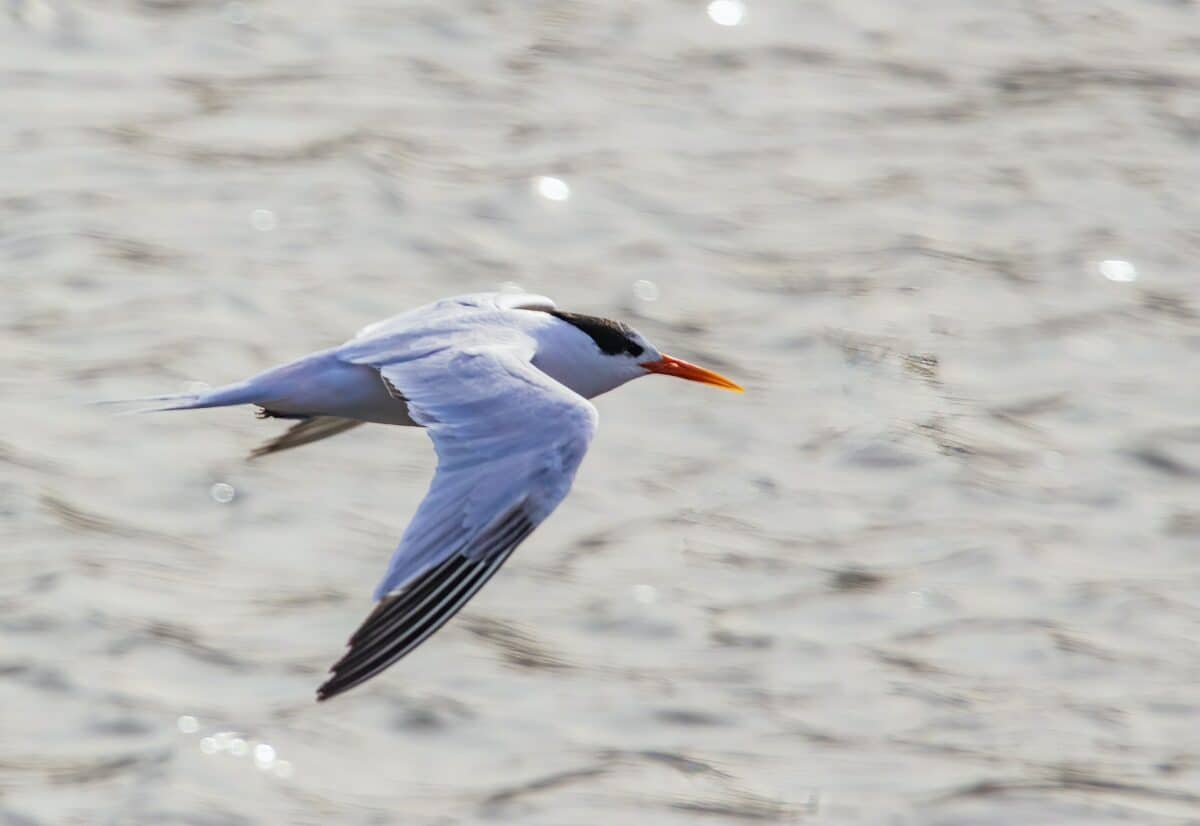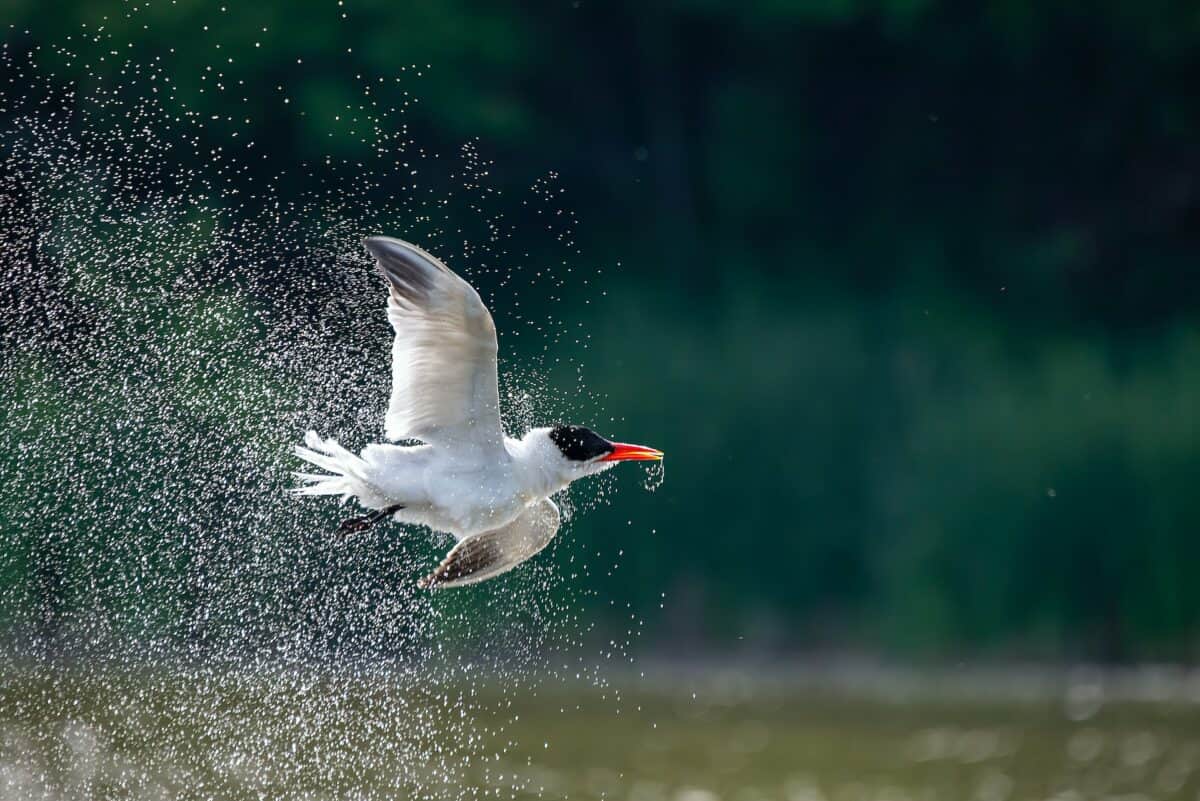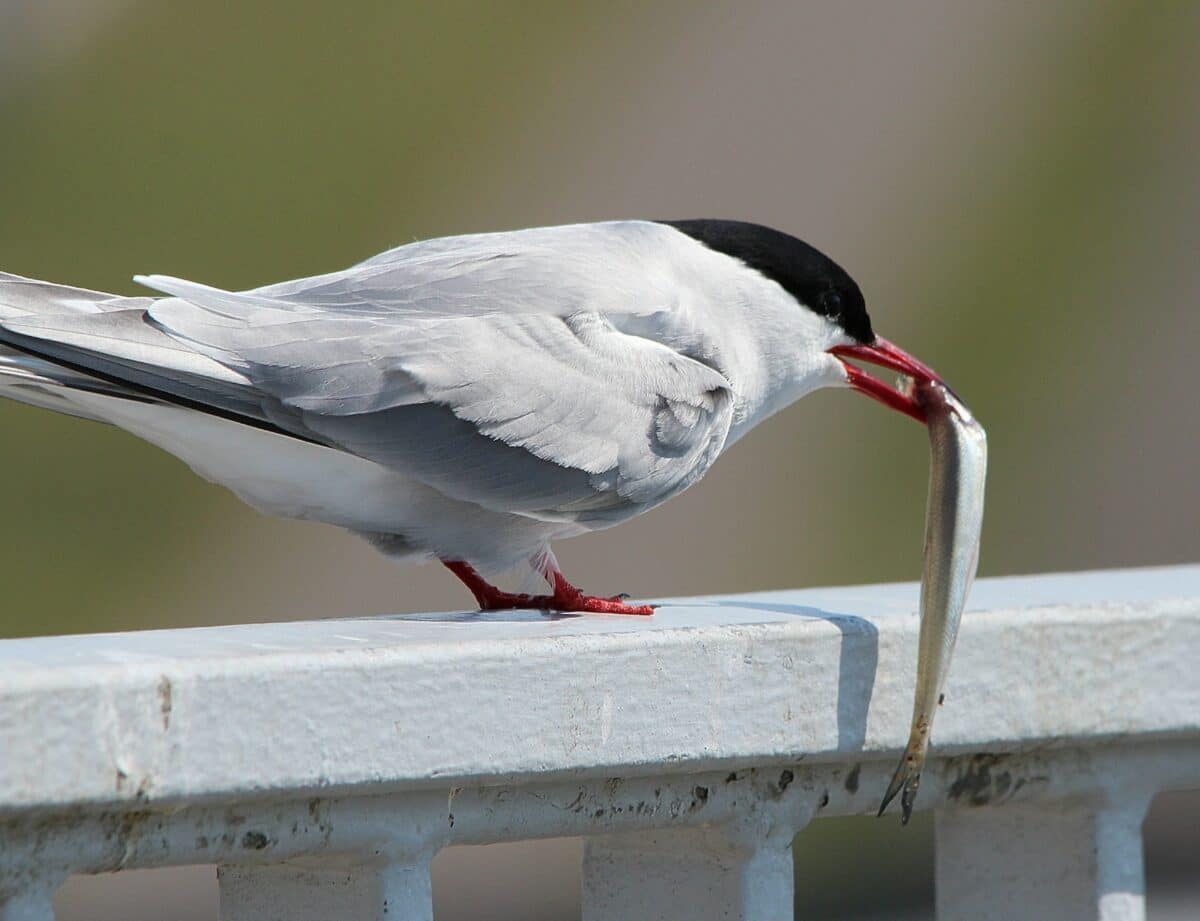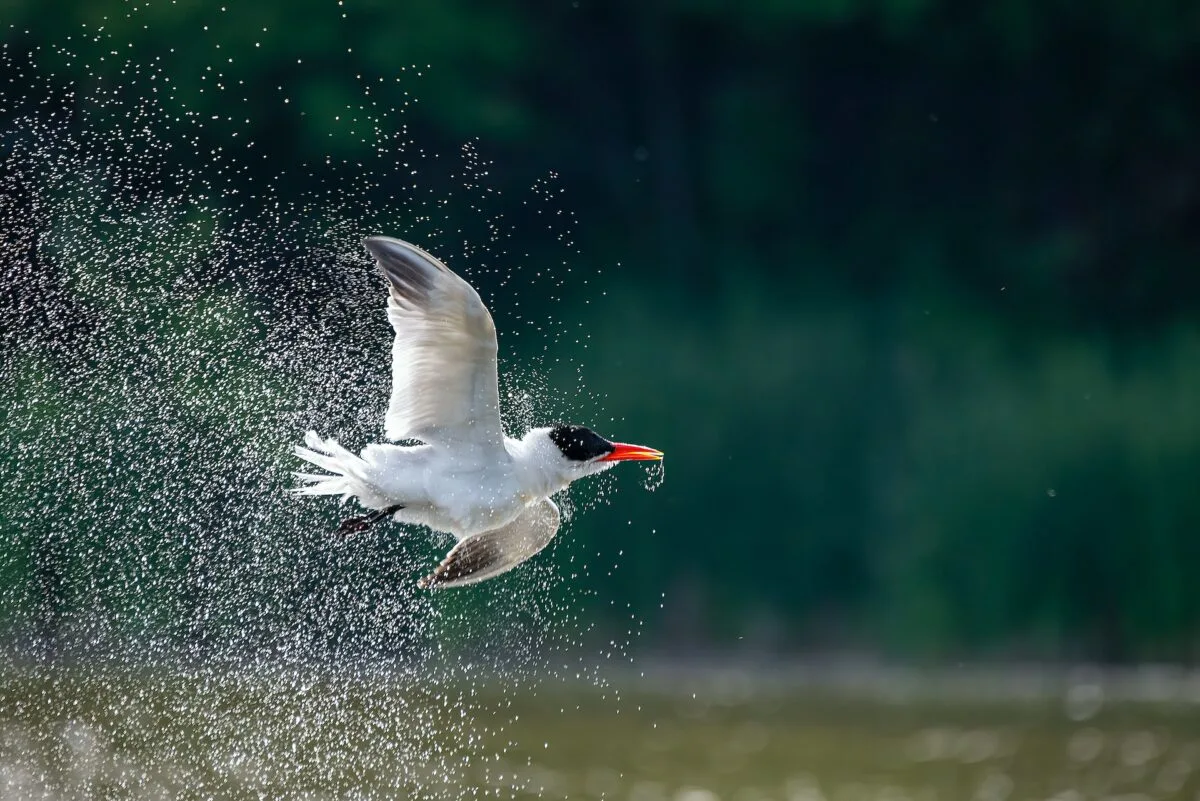In the vast realm of avian migrations, one remarkable journey is the epic migration of the Arctic Tern (Sterna paradisaea).
These small seabirds embark on an extraordinary odyssey every year, traveling from their breeding grounds in the Arctic to the distant shores of the Antarctic and back again. Covering over 40,000 miles (64,000 kilometers), the Arctic Tern’s migration is a testament to their remarkable endurance and adaptability.

Key Points
| 1. Migration Distance: Arctic Terns cover over 40,000 miles (64,000 kilometers) annually, traveling from the Arctic to the Antarctic and back, equivalent to circling the Earth twice. |
| 2. Physical Characteristics: Arctic Terns have a slender body, long forked tail, approximately 28-inch (71-centimeter) wingspan, and weigh around 4.2 ounces (120 grams). They exhibit sexual dimorphism, with males and females looking similar. |
| 3. Nesting and Breeding: Arctic Terns breed in remote coastal areas, rocky islands, or floating icebergs in the Arctic regions of North America, Europe, and Asia. They form monogamous pairs and both parents actively incubate eggs and rear chicks. |
| 4. Challenges Faced: The Arctic Terns encounter obstacles such as changing weather, storms, strong winds, exhaustion, predation risk, and the effects of climate change, including food shortages and disrupted navigational cues. Human-induced dangers like collisions, entanglement, and pollution also pose threats. |
| 5. Conservation Efforts: Conservation initiatives focus on designating protected areas, minimizing disturbance during breeding, promoting sustainable fishing practices, and international collaborations to coordinate efforts. |
Join us as we delve into the captivating world of these fascinating birds, exploring their physical characteristics, nesting habits, and the awe-inspiring challenges they face on their great journey.
Want to jump ahead? Click below
Arctic Tern: A Fascinating Species

The Arctic Tern is a species of bird that belongs to the tern family. It is renowned for its graceful flight, slender body, and long, forked tail.
With a wingspan of approximately 28 inches (71 centimeters), these birds weigh only about 4.2 ounces (120 grams). Their plumage consists of a predominantly white body, light gray wings, and a vibrant red-orange beak. Arctic Terns exhibit strong sexual dimorphism, with males and females possessing similar appearances.
These remarkable birds breed in the Arctic regions of North America, Europe, and Asia during the summer months. They select remote coastal areas, rocky islands, or even floating icebergs as their nesting sites.
Arctic Terns form monogamous pairs, and both parents actively participate in incubating the eggs and rearing the chicks. They feed primarily on small fish, crustaceans, and marine invertebrates, which they catch by plunge-diving from the air.
The Arctic Tern’s remarkable adaptations make it a highly efficient flier. Their long, streamlined wings and light body allow for agile maneuverability in the air.
Their strong flight muscles and high-energy metabolism also enable them to cover vast distances during migration. Now, let’s embark on the incredible journey of the Arctic Tern and explore the challenges they encounter.
Learn in further and greater detail about the Arctic Tern with American Oceans.
The Great Migration

The Arctic Tern’s migration is nothing short of awe-inspiring. As summer wanes in the Arctic, these intrepid birds embark on their incredible journey southward, seeking more abundant food sources in the Antarctic. With the changing seasons, they navigate across vast oceans, following a roughly circular migration route.
Moreover, the first leg of their journey takes them from their breeding grounds in the Arctic to the North Atlantic, where they navigate past Greenland and Iceland.
They continue their southward flight along the western coast of Africa, passing the Cape of Good Hope before reaching the Antarctic Peninsula. Here, they spend the southern summer feeding in the rich waters of the Southern Ocean.
As winter reaches the far corners of the Southern Hemisphere, the Arctic Terns return to the Arctic. They retrace their route, covering immense distances and facing the challenges of changing weather conditions, strong winds, and unpredictable ocean currents.
The return journey takes them across the Atlantic Ocean, often passing over the eastern coast of North America, before finally arriving back at their breeding grounds in the Arctic.
Moreover, the Arctic Tern’s migration is a marvel of precision and endurance. These incredible birds can travel over 40,000 miles (64,000 kilometers) annually, equivalent to circling the Earth twice.
Their navigational abilities, honed over generations, rely on celestial cues, landmarks, and the Earth’s magnetic field. Such an extraordinary migration journey has its challenges, which we will explore in the next section.
National Geographic has a great article on this topic to point you in the right direction!
Challenges Along the Way

The Arctic Tern’s epic journey is not without its obstacles and challenges. These birds encounter various threats and dangers during their migration.
Changing weather patterns, storms, and strong winds can impede their progress and force them to alter their flight paths. Crossing vast expanses of open ocean leaves them vulnerable to exhaustion and predation risk.
Climate change poses an additional challenge for Arctic Terns. Rising sea temperatures affect the availability of their primary food sources, such as fish and krill, potentially leading to food shortages along their migration route.
Alterations in ocean currents and ice cover can also disrupt their navigational cues and make it harder for them to find suitable feeding grounds.
Furthermore, human-induced dangers pose significant risks to the Arctic Tern’s migration. Collisions with structures like wind turbines and power lines are a concern, as are entanglement in fishing gear and pollution in their foraging areas.
Conservation efforts are crucial to mitigating these risks and ensuring the continued success of the Arctic Tern’s epic journey.
Conservation and Research Efforts

Recognizing the importance of protecting the Arctic Tern and its migration, conservation organizations, researchers, and governments have implemented various initiatives. Efforts are focused on safeguarding their breeding grounds, protecting key stopover sites, and reducing human-induced threats.
Conservation measures include:
- Designating protected areas.
- Implementing regulations to minimize disturbance during the breeding season.
- Promoting sustainable fishing practices.
Additionally, ongoing research aims to better understand the Arctic Tern’s migration patterns, feeding ecology, and responses to environmental changes.
Collaboration among different stakeholders is vital for successful conservation. International agreements and partnerships have been established to coordinate conservation efforts across countries and ensure the preservation of critical habitats throughout the Arctic Tern’s migratory range.
By supporting these conservation initiatives, individuals can contribute to the long-term survival of the Arctic Tern.
Donations to organizations dedicated to bird conservation, participation in citizen science projects, and advocating for stronger environmental policies are valuable ways to make a positive impact.
The Arctic Tern’s Significance

The Arctic Tern holds great ecological significance, crucial in marine ecosystems. They regulate populations of small fish and invertebrates, helping to maintain the balance of these marine communities.
Their droppings also contribute nutrients to the ecosystems, enriching coastal areas and supporting the growth of marine plants.
Furthermore, the Arctic Tern holds cultural and symbolic value in many regions. In indigenous cultures, these birds are revered as messengers or spirit animals, embodying resilience, adaptability, and connection to the natural world.
Their remarkable migratory journey has inspired awe and admiration among people worldwide, reminding them of the wonders of nature and the importance of conserving our planet’s biodiversity.
Wrapping Up with the Journey The Arctic Tern
Evidently, the Arctic Tern’s epic migration is a testament to the astonishing capabilities of nature. Furthermore, these birds embark on an awe-inspiring journey from the Arctic to the Antarctic and back, spanning tens of thousands of miles yearly.
Endowed with remarkable adaptations and navigational abilities, they overcome challenges from changing weather, climate, and human activities. Conservation efforts play a vital role in ensuring the survival of the Arctic Tern and preserving the delicate ecosystems it inhabits.
By supporting initiatives focused on habitat protection, reducing human-induced threats, and promoting sustainable practices, we can help and contribute to these incredible birds’ conservation and safety.
As we marvel at the Arctic Tern’s epic journey, let us also reflect on its broader significance—ecologically, culturally, and as a symbol of our interconnectedness with the natural world.
The Arctic Tern’s migration stands as a profound reminder of the beauty and resilience of our planet’s wildlife, motivating us to protect and cherish nature’s wonders.
Next up:
- The Great Wildebeest Migration
- Giant Cuttlefish Migration Around Whyalla Is An Absolute Marvel To All
- 7-Year-Old Stares Down Massive Bear - May 2, 2024
- Elephants Ask Rescuer To Play Piano - May 2, 2024
- Dog Family Rescued From Bushes In Texas - May 2, 2024


